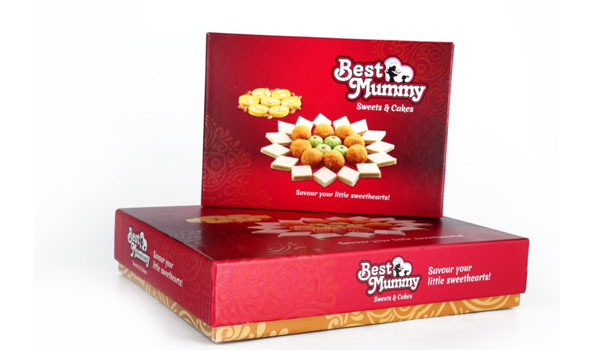The mithai industry, a traditional Indian sweets market, has seen a significant shift in the role of designer packaging. Packaging has evolved from transportation to a statement of style, craftsmanship, and brand identity.
Inventors have created intricate patterns, vibrant colours, and innovative shapes and materials to enhance the allure of the sweets. Adapting to contemporary tastes and preferences, manufacturers and designers innovate to create packaging solutions that protect sweets and evoke emotions, tell stories, and create memorable experiences for consumers.
The demand for designer packaging in the mithai industry is driven by its ability to elevate product perception, attract attention on store shelves, and reflect quality and attention to detail. Unique packaging sets brands apart in a competitive market, making a lasting impression and enticing consumers to indulge in these timeless treats.
Mithai & Namkeen Times magazine has brought together leading experts from the mithai packaging industry to discuss ever-changing trends and latest innovations. Let’s delve into the coverage.
What new designs in packaging solutions are being used for mithai boxes?

“Yes, it’s true that a lot is happening in the packaging sector, said Ashish Agarwal from Mohan Packaging, Hathras. “In the realm of sweet box design, the major focus is on both exterior and interior elements. The latest trend is the use of Scodix printing, or digital foil, for exterior packaging, adding luxury and sophistication. Traditional designs are resurging, evoking nostalgia and heritage. In interior design, combo patterns are gaining popularity, integrating sweets with complementary items like dry fruits and light snacks. Designer PET or glass jars are also gaining traction, with transparent boxes resurging, adding anticipation and allure to the presentation”.
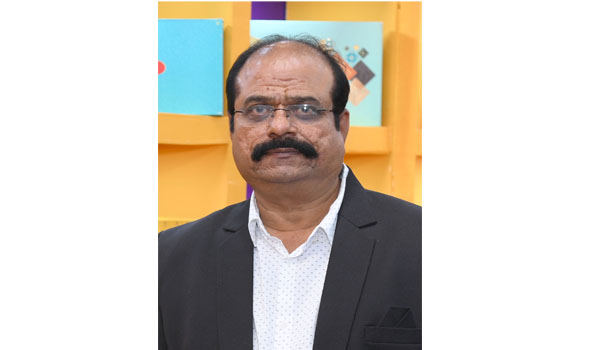
Similarly, Ajjay Karia from Chaitry Offset also discusses the cost disparities between mithai boxes and the sweets they hold, shedding light on the materials and production processes involved. “In the domain of packaging solutions for mithai boxes, there are exciting advancements incorporating cutting-edge technology. Two new machines have been integrated into our factory operations, revolutionizing the process. One significant enhancement lies in the utilization of liquid foil, an advanced version that enables smoother application and facilitates printing with varying thicknesses. This innovation has streamlined the production process, resulting in more precise and vibrant designs on the boxes. Despite the design itself being conventional, the application of liquid foil elevates the appearance dramatically, providing a remarkable transformation.
Additionally, the introduction of a new solution, known as the Rigid-Box making machine, akin to the SCORDIX machine, further enhances the capabilities of our packaging production. This integration ensures enhanced precision and versatility in creating visually striking Mithai boxes, meeting the evolving demands of the market with finesse.
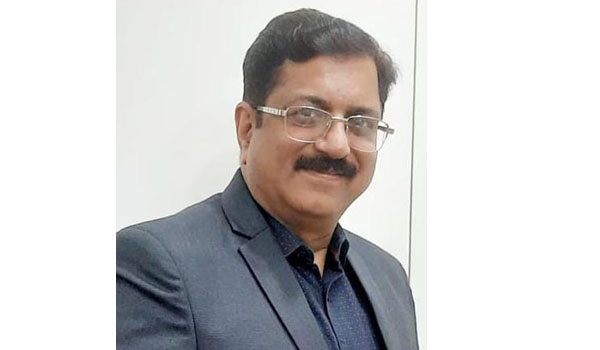
“A new era has begun in designing packaging solutions for mithai boxes,” says Manoj Arora, Partner-Arora Box n Crafts India, Gurugram. “Modern designs for mithai boxes incorporate pastel colours to evoke a premium aesthetic.
Abstract and floral patterns are being utilized to create a contemporary and upscale impression among consumers. In terms of packaging structures, MDF is being used to create innovative designs such as staircase-style hampers and ring boxes. Pouch-style folding boxes are also gaining popularity, especially for smaller weight capacities, as consumers nowadays prefer smaller quantities.”


Giving a discreet reply on the same topic, Mehul Bhimani from Aarohi Print Pack, Ahmedabad, expresses, “Mithai box packaging has grown to feature a range of distinctive shapes and designs, including sleeve boxes, rigid boxes, flap boxes, and window boxes. Modern trends prefer minimalist designs with minimal decorations, such as foil accents on matte surfaces. These simple yet elegant designs showcase the value of the mithai inside the box.
We believe in creating new designs that are modern yet ethnic and that also create a long-lasting impression on the customer visually—Jagat Shah, Perfect Pack.
Perfect Pack, a Mumbai-based packaging company led by creative Jagat Shah, believes in creating designs that not only embrace modernity but also pay homage to the country’s rich cultural heritage.
Perfect Pack is focusing on the traditional mithai box packaging with intricate patterns inspired by indigenous motifs and vibrant palettes, aligning with evolving consumer preferences. Perfect Pack aims to enhance visual appeal while encapsulating the essence of tradition in every box, a testament to their dedication to craftsmanship and creative ingenuity.
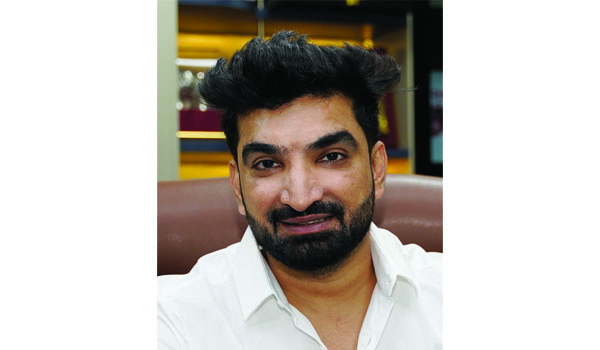
Under the leadership of Lokesh Agarwal, Miracle Group of Companies in Jaipur offers bespoke solutions, making it a trusted partner for top-tier companies.
Miracle Group is introducing innovative packaging designs for mithai boxes, showcasing notable trends in traditional and new-edge sweets. The company offers customized shapes and sizes, innovative closure systems like magnetic closures and ribbon ties, and transparent windows for visual appeal. Multi-compartment boxes are gaining popularity for convenient mithai assortments. The company is also exploring interactive packaging options like augmented reality and QR code-enabled features to provide engaging experiences for consumers.
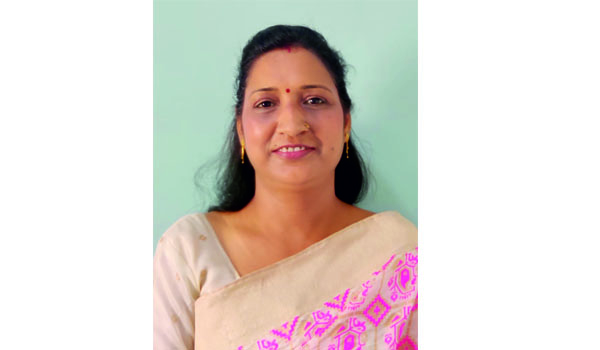
Babita Gandhi, proprietor of Maheshwari Box & Lamination, Mathura, beautifully captures the essence of opening mithai boxes as an experience filled with joy. It’s not just about the sweets within; it’s about unwrapping a bundle of happiness adorned with vibrant colours and charming designs. The phrase ‘kuch meetha ho jaaye’ has evolved into a tradition that adds delight to every moment. Mithai box designs have evolved with creative shapes like octagons, hexagons, and rings, attracting customers. Packaging experts are also introducing themed packaging for special occasions like Holi, incorporating festive elements like colours, pichkaris, and traditional gujiyas.
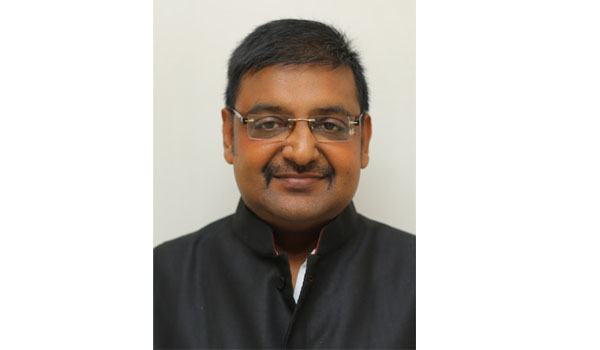
Manojj Bubna, from Shanti Creation, Delhi, highlights the pioneering role of their company in reforming the packaging industry through the introduction of MDF (medium density fiberboard) boxes. This innovation marked a significant departure from traditional cardboard packaging, which was plagued by durability issues, hindering both display and stocking capabilities. Leakage and sinkage were common problems with cardboard packaging.

Aman Gupta, representing Big Byte Sweets & Packaging Co. Ludhiana, proudly presents their commitment to transforming hamper experiences. Big Byte distinguishes itself through their goal, which is to provide customers with a hamper experience that surpasses all expectations, making every aspect, from product selection to packaging, an unforgettable experience for any occasion.
Through their standout offerings, ‘Nani Maa’s: A Taste of Tradition’, the brand embodies the company’s dedication to excellence and tradition, offering customers a taste of nostalgia and warmth with each bite.
This part is done. Our next query is:
How do these designs make mithai more attractive to customers?
To this, Ashish Agarwal offered his reply. “The presentation of mithai packages plays a crucial role in attracting customers and encouraging further exploration”. He equates mithai boxes to jewellery packaging, highlighting their significance as standalone pieces that enhance the gifting experience. Agarwal went on to express himself: “The use of pastel colours in box design creates a subtle yet visually appealing aesthetic, while attention to detail enhances the presentation of sweets. Harmonizing design components inside and outside enhances the appeal of the sweets, providing a pleasurable visual experience for both consumers and receivers.

Ajjay Karia highpoints the significant enhancements in their current packaging solutions for mithai boxes. The packaging design of mithai boxes has undergone a significant transformation, with a clear distinction between colours and designs. The colour schemes, shades, and hues are carefully chosen to align with customer preferences and the delectable contents within. The remarkable transformation in packaging design has made it nearly impossible to resist the allure of mithai boxes, highlighting the importance of aesthetic appeal in attracting customers to the product.
Manoj Arora cited the transformative power of design enhancements in elevating mithai into irresistible delights. Acknowledging the adage that we first eat with our eyes, then with our mouths, Manoj underscores the critical role of visual appeal in the sweets and mithai industry, where packaging serves as a primary factor influencing consumer purchases.
By crafting visually appealing packages that communicate the narrative and values of the brand, Arora Boxes not only entices customers but also cultivates a successful selling strategy rooted in storytelling and aesthetic allure.
Mehul Bhimani’s assessment of the sub-topic highlights the importance of enhancing the unpacking experience to increase the attraction of mithai to customers. By utilizing unique designs and specialized procedures like UV coatings, metallic finishes, SCODIX improvements, and varied textures, the packaging becomes visually appealing and engaging. As buyers open the box, they are greeted with a delightful display that heightens the charm and attractiveness of the mithai inside, ultimately enhancing the overall customer experience and satisfaction.
Colours play a very important role in making the design attractive- Jagat Shah
Jagat Shah accentuates the significance of using design to enhance the allure of mithai for customers. By employing vibrant hues and thoughtful combinations, Perfect Pack taps into the emotional and cultural significance associated with mithai consumption, evoking cravings and memories. Each colour choice is purposeful, aimed at creating a visual feast that excites the senses and complements the delicacies they encase.
The meticulous attention to detail in mithai not only attracts customers to indulge in traditional sweets but also creates an immersive experience, demonstrating the power of design in shaping consumer behaviour and perception.
Elaborating on how these designs make mithai more attractive to customers through various strategies, Lokesh Agarwal complements the mithai brands for using transparent windows in packaging to showcase its vibrant colours and intricate designs, attracting customers with their unique taste. Customization options and eco-friendly materials further enhance the brand’s commitment to sustainability. Innovative closure systems and multi-compartment boxes provide practical packaging solutions. Interactive features like augmented reality and QR codes provide engaging experiences, enhancing the overall appeal and consumer experience.
Babita Gandhi articulates the significance of packaging in attracting customers through the Hindi phrase “Jo Dikhta hai, who Bikta hai!” which underscores how visually appealing packaging enhances product appeal and elevates the gifting experience for both Cadbury chocolates and mithai boxes.
Catering to Gen-Z preferences for eye-catching designs and vibrant colours, sweet shops introduce themed mithai boxes during festivals like Holi, featuring lively designs such as colours, pichkaris, thandai, rooh-afza, and gujiyas. Customization plays a key role, allowing mithai boxes to be tailored to various occasions and events, adding a unique touch to the gift-giving experience, and showcasing thoughtfulness. The overarching goal is to assure customers that “Hamare mithai ke dibbe, har rishte ko meethi yaadein bana dete hain!”
“We produce acrylic boxes in various sizes and shapes, as well as glass bottles in different dimensions. This aesthetic enhancement improves their visual appeal and presentation.
Previously, dry fruits were typically packaged loosely in cloth or velvet pouches. We introduced digital printing and pioneered the concept of packaging consumable items in acrylic boxes, MDF boxes, plastic, and glass bottles”, explained Manojj Bubna.
Showcasing his commitment to innovative packaging solutions that transcend the ordinary, Aman Gupta said, “At Big Byte, we love to think outside the box—quite literally. Our hamper experience has been elevated to new heights with the incorporation of fluorescent colours and ancient Indian designs. These vibrant hues and intricate patterns not only add visual appeal but also serve to highlight the delectable treats within”.
Streaming down the discussion, we wandered ahead with another question:
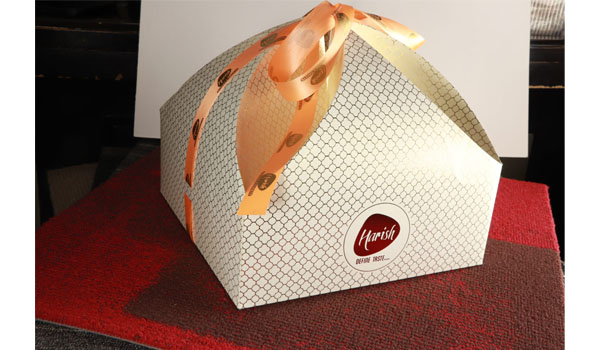
What factors are important when designing mithai boxes?
While designing a concept, a client’s background and cultural relevance have a significant impact on the design of products and packaging. The attraction of the entire design is increased by using high-quality printing processes, such as Pantone colours, which guarantee vivid colours and distinct features. Ashish Agarwal’s viewpoint emphasises how crucial printing quality, colour harmony, and cultural relevance are to producing powerful graphics.
Ajjay Karia emphasizes the crucial role of design in enhancing the overall appearance of boxes. Among their offerings, the hexagon box stands out for its intricate and attention-grabbing shape. Karia stresses that a box’s appeal goes beyond its material quality or production efforts; the design itself is paramount. Even with similar materials and value additions, a well-designed box can significantly enhance its attractiveness. Conversely, a box with excellent craftsmanship may not stand out if the design isn’t effective.
Manoj Arora expressed the multifaceted considerations involved in designing mithai boxes. Firstly, understanding the client’s target audience is pivotal, as preferences vary among demographics. Tailoring the design to resonate with the specific audience ensures relevance and appeal. Secondly, conveying the brand’s values effectively is essential. By understanding the client’s desired message, the packaging design can authentically reflect the brand’s identity.
As much, Bhimani also ensures that mithai boxes serve their primary purpose, i.e., showcasing and protecting the mithai within. The design should seamlessly complement the mithai, enhancing its presentation without detracting from its visual appeal.
Quality, price, and comfort of the customer in terms of packing and forwarding packaged boxes are vital- Jagat Shah.
Stressing on the importance of quality, convenience, and visual aesthetics in mithai box design, Jagat Shah informed that materials like sturdy cardboard and luxurious finishes reflect the brand’s commitment to excellence, while competitive pricing is balanced with craftsmanship. Designed for ease of handling and transportation, mithai boxes feature secure closures and ergonomic handles. Visual aesthetics, with intricate patterns and vibrant colours, reflect the cultural richness and festive spirit of mithai consumption. Functionality ensures the boxes contain and protect delicacies, keeping them fresh during transit. These factors make mithai boxes not just sweet vessels but also ambassadors of quality, convenience, and cultural celebration.
Likewise, Lokesh Agarwal underlines the importance of mithai boxes in preserving the freshness and quality of sweets. He advocates for food-grade materials that adhere to food safety standards, features like moisture, oxygen, or resealable closures, and customization options to suit specific occasions or branding requirements. Agarwal also advocates for eco-friendly materials like recyclable, biodegradable, or compostable options. Packaging should reflect the brand’s aesthetics, messaging, and target audience while striking a balance between design aesthetics and production costs to ensure profitability.
Turning our attention to Babita Gandhi, she opines that packaging design plays a crucial role in representing a brand’s values and personality, ensuring it aligns with the brand’s identity and caters to the target audience’s preferences. Gandhi offers her support for unique designs with colours, patterns, and aesthetics, using creative elements like embossed patterns, metallic finishes, and intricate artwork. Practical considerations like ease of handling, stacking, and shipping are also essential, ensuring a positive experience for both customers and retailers.
Manojj Bubna also agreed upon the crucial aspects of designing mithai boxes, emphasizing the use of vibrant colours and trending hues to capture customers’ attention. He prioritizes incorporating multicolour, pastel tones, and Pantone shades into the design to ensure it resonates with current trends and appeals to the target audience.
Acting upon his motto, Aman Gupta states, ‘”Enhanced Presentation: Making Mithai Shine”, which encapsulates the essence of their packaging design philosophy. Brightly coloured boxes take precedence, placing the spotlight firmly on the delectable mithai. These vibrant containers not only command attention but also elevate the overall presentation, enhancing the entire hamper experience to a new level of opulence”.
With yet another query, our interviewees shared the most crucial replies:
Why are mithai boxes sometimes more expensive than the sweets they hold inside?
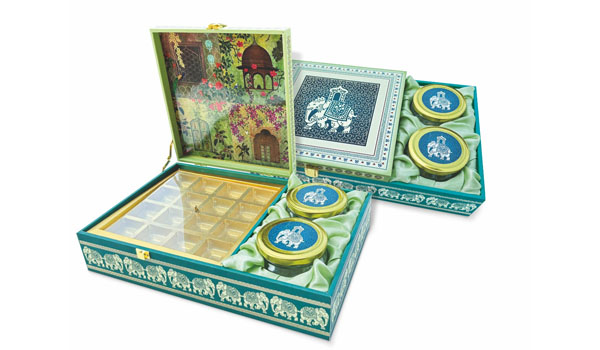
Ashish Agarwal explains that the cost of packaging, particularly MDF boxes, can sometimes exceed the cost of the sweets themselves due to factors like materials, manual labour, storage elements, decoration, and finishing touches.
The box’s cost can exceed 50–60% of the total cost of the sweets. On average, the box’s cost represents 20–30% of the total product cost. Agarwal emphasizes the importance of balancing aesthetics and affordability to remain competitive in the market. Packaging costs significantly impact product economics, requiring prudent decision-making in packaging design and selection.
Taking Ajjay Karia’s call, he discusses the price disparity between mithai boxes and sweet boxes. He claims that mithai boxes are crucial for preserving the product’s quality and taste, as they are perishable and require sturdy packaging. However, using materials like MDF can increase costs, making mithai boxes more expensive.
“Sometimes, mithai boxes are more expensive than sweets. We see this sometimes happening in the gifting segment,” clarified Manoj Arora. “Mithai boxes are often priced higher than their sweets, especially in the gifting segment. These boxes serve as carriers for sweets and are crucial in positioning the brand as luxury or mass-market. The cost of mithai boxes reflects the quality of materials used, intricate designs, branding elements, and overall presentation. These factors contribute to the perceived value of the product, potentially elevating it to luxury status. Consumers may be willing to pay a premium for high-quality sweets packaged in aesthetically pleasing and prestigious mithai boxes, making them more expensive than the sweets themselves”.
“The mithai boxes can cost more than their sweets due to the high cost of materials used in manufacturing. High-quality materials like MDF board or cardboard are used for durability and aesthetic appeal, increasing production costs. Intricate designs, specialized printing techniques, and additional embellishments also contribute to the higher price of mithai boxes. These factors enhance the presentation and perceived value of the sweets”, elucidates Mehul Bhimani.
Because packaging virtually creates the taste and quality of the sweets- Jagat Shah
With full explanation, Jagat said, “Mithai boxes can cost more than their sweets due to factors such as perceived value, brand image, preservation and presentation, craftsmanship, customization, and market demand. High-quality packaging positively impacts the brand’s image, as customers associate well-designed and sturdy packaging with superior products and exceptional service. Preservation and presentation are crucial for mithai boxes, with specialized materials and designs ensuring optimal condition. Customization, embellishments, or thematic designs, can also increase the price of mithai boxes,” added Jagat.
Tapping further, Lokesh Agarwal disclosed the high costs associated with mithai boxes, which are made from high-quality materials, custom designs, and manufacturing processes. Special features like embossing and foil stamping can increase production costs. Eco-friendly options may be more expensive due to their sustainability. Economic factors like inflation and supply chain dynamics also influence pricing.
Babita Gandhi informs us about the intricate designs and premium materials used. These include kappa boards, luxurious finishes, and eco-friendly options. However, the complexity of design increases labour and production expenses, as detailed designs require expertise and high-tech equipment. Mithai boxes are integral to the gift-giving tradition, with customers valuing the extra features, ease of use, and beautiful appearance of well-crafted packaging.
Manojj Bubna reasons that this is because, when you give someone mithai, you’re not just offering sweets; it’s a gift, a gesture. He believes that unique and innovative packaging design significantly impacts the reception of the product. Mithai packaging should exude class, sophistication, and distinctiveness, aligning with current trends to capture the recipient’s attention and appreciation.
Aman Gupta prioritizes freshness in their products, adhering to strict policies to prevent smell or moisture, preserving the original flavour and texture of each delight. This commitment to authenticity and quality reflects Big Byte’s dedication to customer satisfaction and upholding the legacy of homemade treats, as they adhere to the traditional recipes and intentions of Nani Maa.
With our final approach to the story, we concluded with this question:
How are companies making mithai packaging more eco-friendly?

The importance of quality and longevity in food packaging, focuses on factors like cardboard type, hot glue quality, and a clean production environment. Ashish Agarwal recommends materials like kappa or recycled board for durability and high-quality hot glue to prevent odours and adhesion issues.
Agarwal conditioned the need for a safe and hygienic production environment, giving importance to the finished product over the packaging itself.
Ajjay Karia focuses on ethical practices and eco-friendly mithai packaging, using materials like BOPP and Cosmo Film for hygienic properties and quality preservation. They use fine art paper for high hygiene standards. Swastik Kappa board is used for its hygienic properties and approval for food contact, enhancing mithai box presentation. Despite limited raw material availability and production migration from China, Swastik Kappa board stands out for its longevity, freshness, being made from virgin material, and optimal thickness, enhancing the packaging’s durability and appeal.
By using recycled cardboard, compressed wood, and other sustainable alternatives, Manoj Arora is promoting eco-friendly mithai packaging. The firm is also reducing single-use plastic use by replacing components with glass and metal jars and paperboard inlay trays. This approach aims to reduce environmental impact and contribute to sustainability efforts in the packaging industry.
Focusing on minimizing waste and using only essential materials, Mehul Bhimani accentuates the importance of eco-friendly practices in mithai packaging. He suggests reducing excess packaging and using recyclable or biodegradable options like paperboard or compostable plastics. Bhimani pinpoints the need for consumer education on proper disposal and recycling practices to further contribute to mithai packaging’s sustainability.
Giving a brief overview, Jagat stated, “The company is implementing strategies to make mithai packaging more eco-friendly, reducing its environmental impact. They are using eco-friendly materials like recycled cardboard, paperboard, and compostable plastics, which are biodegradable or recyclable.
They are also reducing waste by reducing excess packaging material during production and distribution processes. They are phasing out single-use plastics in favour of sustainable alternatives like glass or metal jars or biodegradable packaging.
Biodegradable materials like compostable plastics, biodegradable paperboard, and plant-based packaging are being used to reduce waste and environmental impact.
Recycled materials are also being used to minimize the carbon footprint of packaging production. Minimalist design approaches are being adopted to optimize material usage and minimize waste generation. Reusable mithai packaging options are also being introduced to reduce single-use waste”, is the practice followed by Lokesh Agarwal.
Manojj Bubna stresses on the sustainability of MDF packaging, which is made from recyclable material. He highlights efforts to reduce plastic usage, aligning with environmental goals.
Bubna notes that MDF boxes degrade quickly when immersed in water, offering a recyclable and reusable option that contributes to a more sustainable approach.
At Big Byte, Aman Gupta champions sustainable solutions and a commitment to caring for the environment. They prioritize ethical behaviour by placing a high emphasis on using recyclable materials and food-grade packaging in their operations.
By reducing their environmental impact, they ensure that every hamper experience is not only sustainable but also guilt-free, thus contributing to the protection of the environment.


